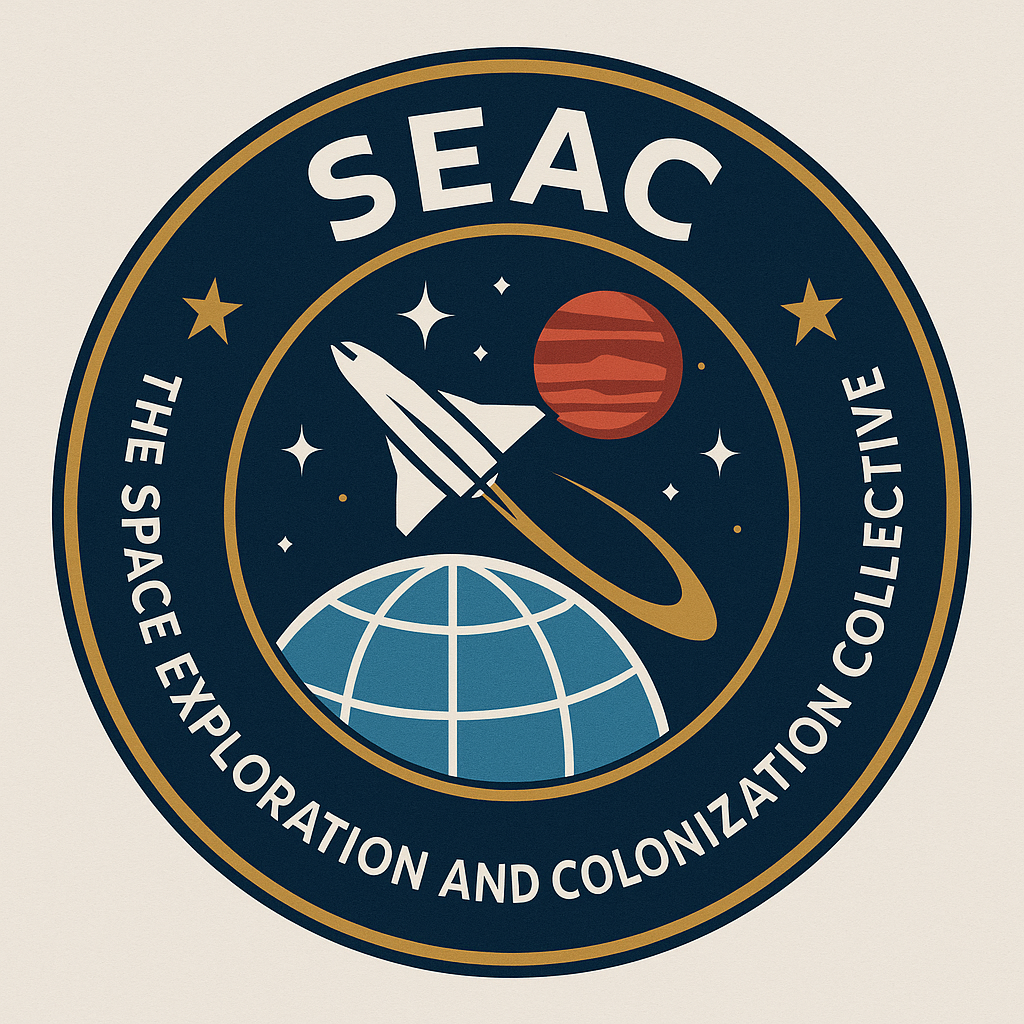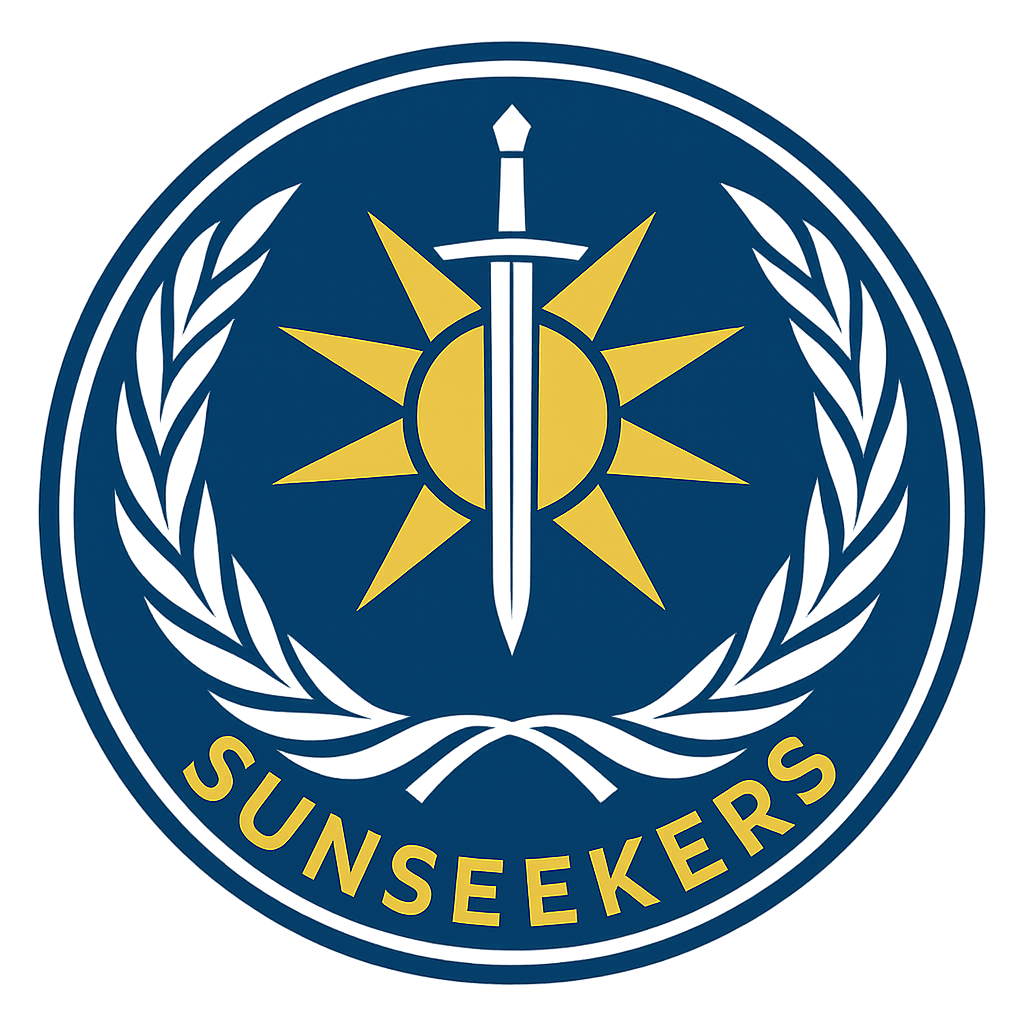The Space Exploration And Colonization Collective
"We choose to go to the moon in this decade and do the other things, not because they are easy, but because they are hard."
Colonization Protocol: Colonist Classes and Admission Policy
When establishing a new off-world settlement, SEAC requires a diverse population of colonists capable of building sustainable, ethical, and functional societies. However, active SEAC personnel are strictly prohibited from becoming colonists, and former SEAC personnel must undergo a mandatory three-year cooling-off period post-termination before qualifying. This ensures separation between administrative authority and settler autonomy.
All colonists are subject to an Admission Cost, a comprehensive term encompassing the logistical, infrastructural, and resource expenses required to transport and integrate individuals into a colony. Admission costs vary by colony and are set by the Director of SEAC in coordination with the Chief Operations Officer and relevant Board agencies.
Colonist Classifications
Corporate Colonist
- Profile: Sponsored employees of corporations licensed to operate in off-world settlements.
- Function: Typically aids in the establishment of industrial, logistical, or technological infrastructure. Though acting under corporate charter, they maintain individual ownership of any land or facilities they develop.
- Admission: Fully subsidized by the sponsoring entity.
- Note: Many later sell their holdings back to their company upon recognition of the colony’s independence via a UN Sovereignty Binding Resolution.
General Colonist
- Profile: Private citizens voluntarily applying for resettlement.
- Function: General labor, homesteading, community building.
- Admission: Self-funded. These colonists bear full responsibility for their relocation and integration costs.
SME Colonist (Subject-Matter Expert)
- Profile: Individuals with critical skill sets—engineers, scientists, tradespeople, or academic professionals. Typically possess:
- A Master’s degree or multiple Bachelor’s degrees
- Professional certifications in high-demand trades (e.g., electricians, mechanics, medics)
- Function: Serve as the technical backbone of early-stage colony development.
- Admission: Reduced to 50%, with remaining cost often sponsored by academic institutions, governments, or SEAC-endorsed grants.
Samaritan Colonist
- Profile: Individuals with criminal records—non-violent or non-egregiously harmful offenders.
- Function: Provide a population stress-test for fledgling colonies while receiving a genuine chance at redemption.
- Admission: Fully subsidized by SEAC, which also offers financial incentives to nations that transfer eligible individuals.
- Note: These colonists often serve as a litmus test for societal resilience; high recidivism or legal breakdowns may cause SEAC to withdraw support from the colony altogether.
Liberal Colonist
- Profile: Artists, writers, philosophers, religious leaders, legal theorists, musicians, and other cultural contributors.
- Function: Infuse the colony with cultural identity, ethical discourse, and spiritual guidance.
- Admission: 50% subsidized by SEAC, with mandatory nomination quotas required from each UN-member state.
- Quota: 1/3 of all colony seats are reserved for Liberal Colonists to meet the UN mandate for ethical and humane colonization.
Lottery Colonist
- Profile: Civilians with no particular technical skill or affiliation—everyday people.
- Function: Represent the societal baseline and human commonality. They embody the mundane normalcy required for healthy, grounded communities.
- Admission: Fully subsidized by SEAC.
- Selection: The Global lottery system is open to any citizen of the UCE. Applicants must not qualify for any other colonist category to be eligible.
- Quota: 1/3 of total colony seats are reserved for Lottery Colonists to ensure equitable representation.
Transport & Citizenship Protocol
Selected colonists are placed into Cryostasis (“put on Ice”) for safe and efficient interstellar transit. Upon arrival and revival, they retain dual citizenship:
- Their country of origin
- The United Confederation of Earth
Colonists may voluntarily relinquish either or both designations at any time. However, all colonists fall under SEAC transitional governance until the colony achieves recognized sovereignty through a UNGA-ratified Sovereignty Binding Resolution.
Structure
Director of SEAC
- Role: Chief Executive of SEAC and Earth’s primary authority on off-world affairs.
- Appointed by: Elected by SEAC's Board of Executives, confirmed by the UN General Assembly.
- Responsibilities:
- Oversees all SEAC operations, including exploration, colonization, and research.
- Serves as SEAC’s diplomatic liaison to the UCE, extraterrestrial bodies, and private stakeholders.
- Cannot authorize military deployment—must defer to the UN Global Security Council for Sunseeker activation.
- Chairs all interplanetary ethics committees and colonial oversight boards.
Board of Executives
- Role: Advisory and voting council composed of Executive Representatives from all founding and contributing space agencies.
- Membership Includes:
- NASA (USA)
- ESA (Europe)
- CNSA (China)
- Roscosmos (Russia)
- JAXA (Japan)
- ISRO (India)
- CSA (Canada)
- Responsibilities:
- Elect the Director of SEAC.
- Vote on major mission approvals, joint international ventures, and research directives.
- Ensure equitable scientific contribution and benefit distribution among member agencies.
- Interface with national governments and academia to maintain recruitment pipelines and funding flows.
Chief Science Officer (CSO)
- Role: Oversees all scientific research, planetary studies, and xenoarchaeological missions.
- Reports to: Director of SEAC
- Leads:
- Astrobiology divisions
- Stellar cartography and navigation
- Terraforming and biosphere engineering projects
- Interdimensional anomalies and exotic matter investigations
Chief Operations Officer (COO)
- Role: Manages logistics, infrastructure, colonization planning, and interplanetary engineering.
- Divisions:
- Orbital Infrastructure & Space Elevator Development
- Lunar and Martian Colony Oversight
- Resource Extraction & Refinement Corps
- Interstellar Habitat Construction
Commander of the Sunseekers
- Role: Supreme Officer of SEAC's armed branch.
- Note: Deployment of Sunseekers requires authorization from the UN Global Security Council (UNGSC).
- Responsibilities:
- Organizes and trains armed personnel for alien defense and first contact enforcement.
- Coordinates with WAPID, HAVOC, and ICON in cases of psionic, magical, or anomalous extraterrestrial threats.
- Maintains high-alert bases on Lua, Mars, and orbital stations.
Chief Ethics & Sentient Rights Officer
- Role: Oversees the ethical dimensions of colonization, contact, and exploration.
- Duties:
- Chairs the Interplanetary Bioethics Tribunal.
- Ensures compliance with the Sapient Contact Protocol and the Universal Rights Accord.
- Report any violations of colonization ethics directly to the UNGA.
Public Agenda
As mandated by the United Confederation of Earth (UCE), the Space Exploration and Colonization Collective (SEAC) is entrusted with the advancement of humanity beyond Earth through ethical exploration, principled colonization, and scientifically responsible research. SEAC’s mission is not defined solely by outcomes, but by adherence to a moral and operational framework that ensures all activities reflect the collective values of dignity, restraint, and shared human stewardship. This framework is codified in the SEAC Code of Conduct, which underpins all decisions and directives.
- Non-Interference with Emerging Life: SEAC shall not intervene in any planetary environment where verifiable evidence of indigenous life, sentient or pre-sentient, is detected. The risk of ecological or evolutionary disruption shall be treated as prohibitive unless otherwise resolved by consensus of the Interplanetary Bioethics Tribunal.
- Peaceful First Contact Protocol: SEAC personnel shall pursue peaceful engagement with alien civilizations to the fullest extent consistent with personnel safety and planetary security. Diplomatic efforts are to be exhausted before any invocation of defensive measures.
- Non-Sovereign Administration of Off-World Settlements: No Earth-based nation, corporation, or entity may lay claim to any extraterrestrial territory or colony. All settlements established beyond Earth’s sphere fall under the neutral administrative authority of SEAC until the United Nations General Assembly (UNGA) ratifies a Sovereignty Binding Resolution, affirming the colony’s self-sufficiency and capacity for independent governance.
- Prohibition of Territorial Possession by SEAC: SEAC is not empowered to retain ownership, dominion, or legal stewardship over any world, colony, or polity. Its administrative role is strictly custodial and transitional, intended to guide colonies toward autonomy. Following the issuance of a Sovereignty Binding Resolution, SEAC’s role is limited to technical advisory and ethical oversight, subject to recall by the UNGA.
- Equitable Dissemination of Scientific Advancement: All technologies, scientific discoveries, and intellectual outputs produced or procured under SEAC auspices are deemed the collective property of humanity. Such advancements shall be disseminated openly or at minimal cost across Earth and all recognized colony worlds. Revenues collected from limited commercialization shall be reallocated exclusively to SEAC’s operational and research functions, as stipulated by UN funding law.
- Restricted Diplomatic Authority: SEAC shall not function as a sovereign diplomatic entity. Its personnel may not negotiate, represent, or speak on behalf of the United Confederation of Earth or any affiliated colonial administration, except when explicitly authorized by a Binding UN Resolution and accompanied by an accredited UCE official.
Military
The Sunseekers serve as the elite armed division of SEAC, entrusted with safeguarding Earth’s interests beyond its atmosphere. They are commanded by the Commander of the Sunseekers (CoS)—a position of immense trust, though not necessarily of greatest power.
The CoS holds exclusive legal authority to issue operational commands to the Sunseekers. However, they may not initiate offensive actions or hostile engagements without explicit authorization from the UN Global Security Council (UNGSC). In cases of active threat or emergency, the CoS is empowered to defend SEAC personnel, infrastructure, or colonies under the doctrine of immediate existential defense.
Unlike a traditional military force, the Sunseekers function as Earth’s vanguard unit, a small but formidable team of approximately 10–15 operatives, each considered a planetary-scale asset. Members are drawn from among the most exceptional beings humanity has produced—supreme magicians, psionic paragons, reality-benders, post-human supersoldiers, and retired global superheroes. Their collective presence represents both a deterrent to extraterrestrial threats and a contingency force for crises beyond conventional resolution.
In rare cases, the UN has even subsidized the inclusion of unstable but hyper-capable individuals, relocating them off-world via Sunseeker commission to minimize the threat their presence poses on Earth.
While the CoS is not always the most powerful Sunseeker, they are selected for their unshakable discipline, moral clarity, and capacity to act with restraint in situations where unchecked power could imperil global stability.
The Sunseekers are not an army—they are a shield of last resort. Their activation signals that diplomacy has failed, and that the safety of humanity is at stake.

"Two possibilities exist: either we are alone in the universe or we are not. Both are equally terrifying" | Arthur C. Clarke
SEAC Global Headquarters
Location: Geneva, Switzerland
Function: Executive and diplomatic seat of SEAC
Significance:
- Located adjacent to the UN complex, facilitating seamless coordination with the UN General Assembly (UNGA) and Global Security Council (UNGSC)
- Houses the Director of SEAC, the Board of Executives, and the Chief Ethics & Sentient Rights Office
- Site of annual Interplanetary Ethics Summit and Colony Sovereignty Reviews
SEAC Launch Complex Alpha (LCA-1)
Location: Baikonur Cosmodrome, Kazakhstan (leased under international treaty)
Function: Primary heavy-lift orbital launch and cryostasis embarkation site
Significance:
- Equipped with massive vertical launch arrays for colony-class transport vessels
- Cryo-embarkation terminals used for putting colonists “on Ice”
- Jointly staffed by Roscosmos and the SEAC logistics corps
SEAC Lunar Command Liaison (LCL)
Location: Hawai‘i, United States – Mauna Kea Summit Zone
Function: Ground-to-Moon communications array and orbital uplink
Significance:
- Interfaces with Lua’s orbital infrastructure and Sunseeker command centers
- Also serves as an early warning site for interstellar anomalies approaching Earth
- Protected zone under the UCE environmental safeguard clauses
Global Cryostasis Network Command (GCNC)
Location: Umeå, Sweden
Function: Oversees Earth’s network of cryostasis chambers and colonist processing
Significance:
- Ensures safe stasis protocols and maintains genetic/psychological archives for all colonists
- Known informally as the “Ice Registry”
- Operated in conjunction with ESA and UCE Health Authority
SEAC Terraforming Simulation & Biosphere Engineering Center
Location: Alice Springs, Australia
Function: Environmental modeling for off-world terraforming projects
Significance:
- Mimics Martian, Proxima, and exo-Earth ecosystems
- Hosts experimental biodomes and genetic modification labs
- A joint venture with ISRO and CSIRO (Australia’s national science agency)
SEAC Corporate Licensing and Oversight Office
Location: Singapore
Function: Regulates all corporate-chartered off-world operations
Significance:
- Reviews licenses for Corporate Colonists and extraterrestrial business ventures
- Enforces ethical standards and adjudicates SEAC-commercial disputes
- Key meeting site for public-private tech agreements and intellectual property treaties
Interplanetary Bioethics Tribunal (IBT)
Location: The Hague, Netherlands
Function: Judicial and ethical oversight of all SEAC planetary missions
Significance:
- Reviews potential ecological violations, violations of sentient rights, and planetary misconduct
- Hears cases involving alleged breaches of the Non-Interference Mandate or Sapient Contact Protocol
- Also receives reports from the Chief Ethics & Sentient Rights Officer
SEAC Astronautical Training Academy (SATA)
Location: Quebec, Canada
Function: Trains SEAC field personnel and Sunseeker support staff
Significance:
- Canada’s CSA leads curriculum development
- Specialized modules for operating on low-gravity colonies, managing alien encounters, and piloting interstellar craft
- Also hosts simulation drills for psionic and magical anomalies in coordination with ICON and HAVOC
SEAC South Orbital Logistics Hub (SOLH)
Location: Tierra del Fuego, Argentina-Chile Border
Function: Transcontinental supply coordination and launch fallback site
Significance:
- Supports emergency launch windows to Lua and Mars
- Supplies Antarctic research outposts and SEAC's southern hemisphere infrastructure
- Ideal location for shielded satellite calibration and solar sail experimentation
Global Xenoarchaeology Archive (GXA)
Location: Cairo, Egypt
Function: Central repository of xenoarchaeological findings and alien artifacts
Significance:
- Secured beneath the Cairo Science Citadel
- Stores both terrestrial anomalous finds and extraplanetary relics for analysis
- Managed by a joint WAPID-SEAC panel under restricted clearance levels
SEAC Public Relations and Recruitment Bureau
Location: Lagos, Nigeria
Function: Coordinates SEAC outreach, education campaigns, and lottery enrollment
Significance:
- Hosts the Global Colonist Lottery Draw each year
- Promotes ethical colonization literacy and encourages STEM development in underserved regions
- Largest SEAC-led media center for broadcasting interstellar updates and colony progress reports




Comments